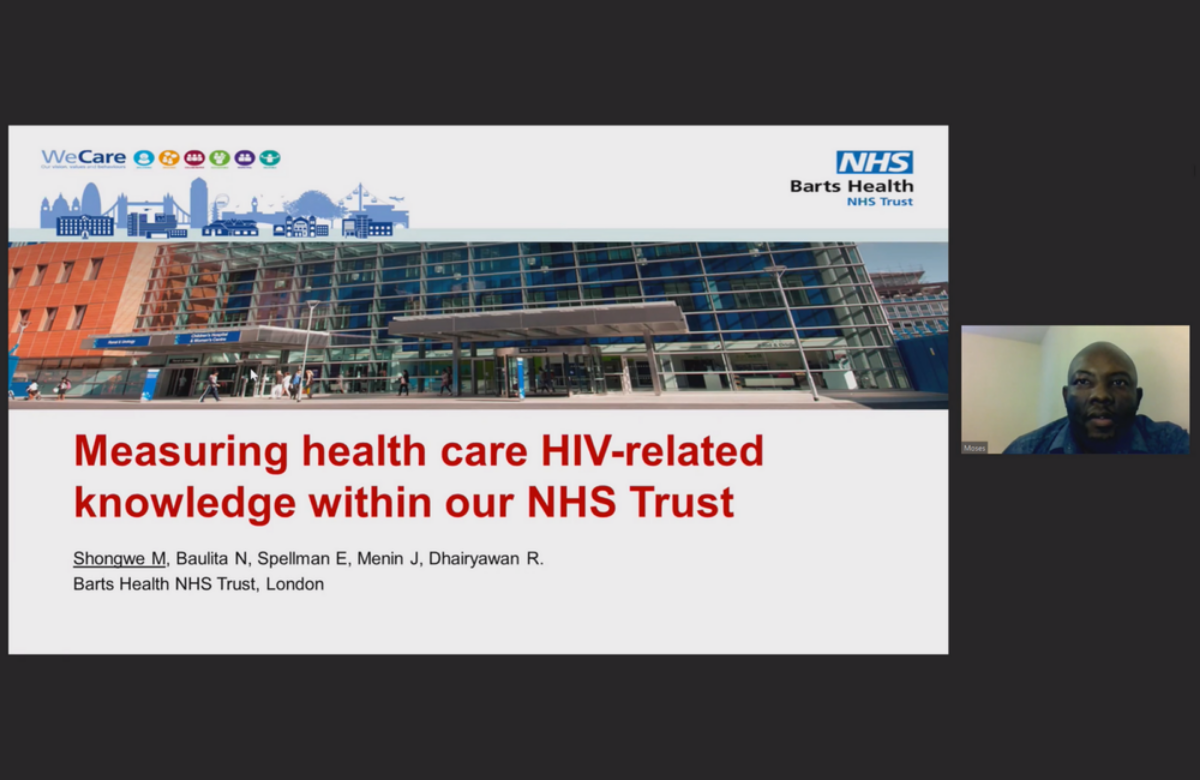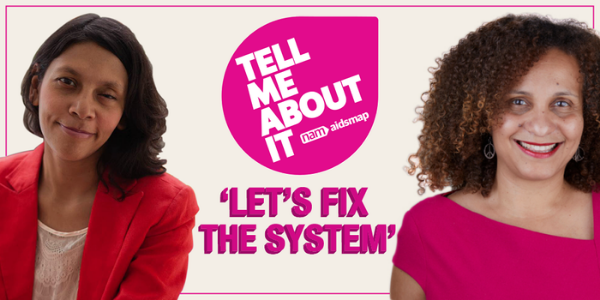COVID-19 in people with HIV

This was an analysis by Public Health England of deaths between March and June last year. Of around 50,000 COVID-19 deaths, 99 were in people with diagnosed HIV. Overall, the proportion of people dying was low – around 1 in 1000 people living with HIV in England.
Nonetheless, looking at the entire population, including people with HIV, four factors increased the risk of dying from COVID-19: being a man, older age, non-White ethnicity and having HIV. People living with HIV were approximately twice as likely to die from COVID-19 as people without HIV.
Among people with HIV who died of COVID-19, just over half were aged 60 or over. Whereas 35% of people living with HIV in England are Black, Asian or another minority ethnicity, 68% of those who died were of a minority ethnic group. Nine in ten of those with HIV who died had another health condition, including heart disease, obesity, diabetes, kidney disease or high blood pressure.
A separate study, looking at COVID-19 cases reported to HIV clinics in the UK in the second wave of the pandemic, found that Black African people living with HIV had a higher risk of severe illness, as did people who were obese and people with low CD4 counts (below 200).
Both studies reinforce the importance of prompt vaccination for people living with HIV, especially those with additional risk factors, such as belonging to an ethnic minority group, having other health conditions or a low CD4 count.
Death rate falling, but still higher among people with HIV

Among people who were diagnosed with HIV between 1985 and 1996, almost half (46%) had died ten years after their diagnosis, whereas the death rate after ten years was 3% in a comparable group of people in the general population. Those diagnosed between 1996 and 2005 benefitted from the first effective HIV treatments, lowering the death rate after ten years to 16%. Further improvements in treatment and care benefitted people diagnosed between 2006 and 2017: death rates are expected to be 9% after ten years.
Many of the deaths happened soon after HIV diagnosis, in people who were diagnosed at a late stage with advanced disease. In fact, if we just look at HIV-positive individuals who were alive two years after their HIV diagnosis, in recent years the death rate has only been slightly higher among people with HIV than in a comparable group of HIV-negative people.
However, the study also showed a persisting, higher burden of illnesses among people living with HIV. These include higher rates of alcohol problems, mental health disorders, liver disease, kidney disease and lung disease.
These illnesses continue to contribute to deaths in people with HIV in Denmark. As most people’s HIV is now well controlled with modern treatments, the researchers say that preventing and better managing these other health conditions is key to reducing early deaths in people living with HIV.
Podcast series: Tell Me About It

All six episodes of our podcast 'Tell Me About It' are available to download from Apple and Spotify.
The series features honest, funny and open conversations about what it really means to live with HIV today, and how much that’s changed.
The guests include: actor Jonathan Blake, one of the first people to be diagnosed with HIV; Dr Naomi Sutton, consultant physician in sexual health and star of E4's The Sex Clinic; Simon Blake, CEO of Mental Health First Aid and Deputy Chair of Stonewall; Dr Halima Begum, Director of the Runnymede Trust; and Susan Cole and Matthew Hodson from NAM aidsmap.
Fewer condoms, but more safer sex

Although there’s been a big fall in consistent condom use by Australian gay and bisexual men in recent years, their overall use of HIV prevention is up, researchers say. More of the men’s sex is safer than it was before, mostly because so many more men are now taking PrEP. HIV-positive men having an undetectable viral load has also contributed.
Australia has been a world leader in the rapid roll-out of the HIV prevention medication PrEP among gay and bisexual men. HIV treatment is available free of charge to most people and the benefits of HIV treatment for prevention have been promoted.
Researchers looked at over 30,000 responses to surveys between 2014 and 2019. Men completed these surveys at gay events, gay bars and online. They were asked about casual sex in the previous six months.
One of the biggest changes was a decline in the number of men who said they always used a condom for anal sex with casual partners (45% in 2014, falling to 23% in 2019). But this was compensated for by HIV-negative men taking PrEP (less than 1% in 2014, rising to 31% in 2019).
The numbers of HIV-negative men who weren’t taking PrEP and had sex without a condom fell, from 30% to 25%.
Another form of safer sex is when an HIV-positive man is taking HIV treatment and has an undetectable viral load (not enough HIV to pass it on). This also increased (from 4.8% to 5.8%) while the numbers of HIV-positive men who were not undetectable and had sex without a condom fell by the same amount (from 1.6% to 0.6%).
There were also men who hadn’t had anal sex with their casual partners in the previous six months (18% in 2014 and 15% in 2019).
Putting together all the men who had practices that we can call ‘safer sex’ – condom use, PrEP, an undetectable viral load or no anal sex – the total rose from 68% to 75% over the five-year period.
And that doesn’t take into account men’s partners. For example, an HIV-negative man who is not on PrEP and has sex without a condom would in fact be having safer sex if his HIV-positive partner had an undetectable viral load.
The researchers say these changes are likely to have contributed to recent declines in HIV infections in Australia.
Telling children about HIV

HIV-positive mothers who share their HIV status with their HIV-negative children report greater communication and improved relationships, US researchers say. The study found that mothers who had disclosed saw greater decreases in parenting stress compared with those who did not. The study suggests that HIV disclosure enhances open communication and closer bonds within parent-child relationships.
One child told the researchers:
“It helped our relationship because she told us her biggest, biggest, biggest secret. So now I feel more close to my mom because of what she told us.”
One mother said:
“I don’t feel like I’m holding as much in as a secret, you know, like, I don’t have to dance and prance around and tiptoe around my conversations.”
Some children worried about their parent and took on extra responsibilities, as one mother explained:
“Now every night, every, every night he’s like, “Mum your medications, la la”... I think that he thought that if I didn’t take my medication, then I would die, that’s what I think.”
The researchers say that more support should be offered to both parents and children, to facilitate these conversations and to develop the children’s understanding of HIV.
Sexual dysfunction and HIV

A healthy sex life, intimacy and physical pleasure are important parts of your overall health. Sexual problems can be an issue for anyone at different times in their lives, but studies show that people with HIV are particularly prone to them.
Find out about sexual dysfunction and HIV on our About HIV page.
Editors' picks from other sources
Benefits of continuing to provide life-saving HIV services outweigh the risk of COVID-19 transmission by 100 to 1 | World Health Organization
UNAIDS and WHO have supported mathematical modelling to establish the benefits of continuing HIV services compared to the potential harm of additional COVID-19 transmission.
Most cancer drug trials still exclude people with HIV. That’s both unfounded and dangerous | TheBodyPro
Tim Murphy: Helping my longtime friend Jeremy find such trials alerted me to this ongoing problem – which will only be reversed if patients, doctors, and trial reviewers keep pushing back on pharma.
AIDS memorial planned on Tottenham Court Road, London | Fitzrovia News
A new memorial to victims and survivors of AIDS could be sited somewhere on Tottenham Court Road in time for World AIDS Day 2021 – 40 years since the first patients were diagnosed – if plans by a campaign group are successful.
